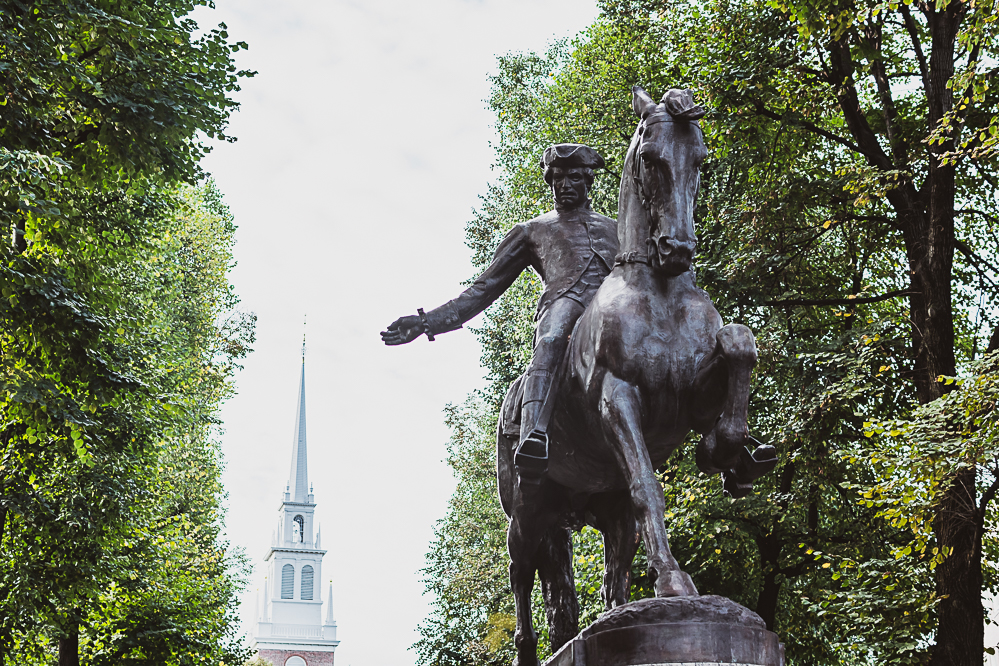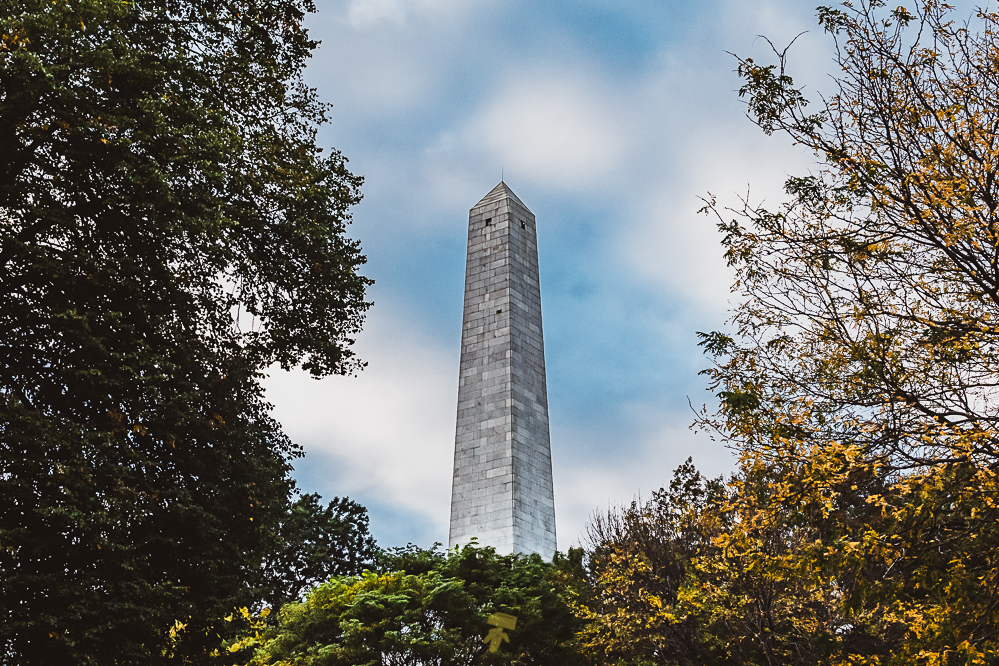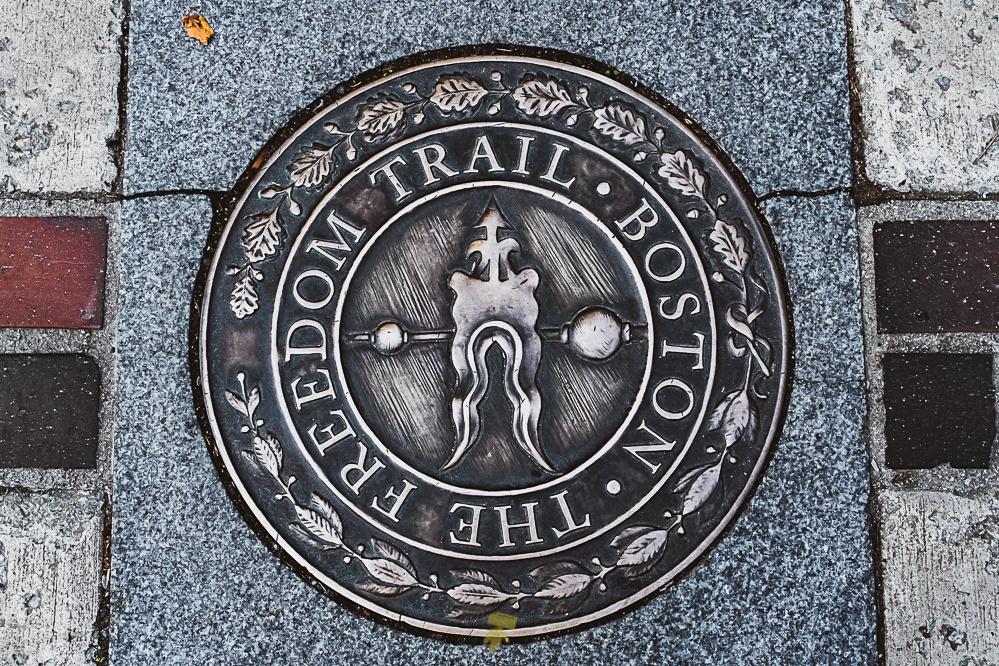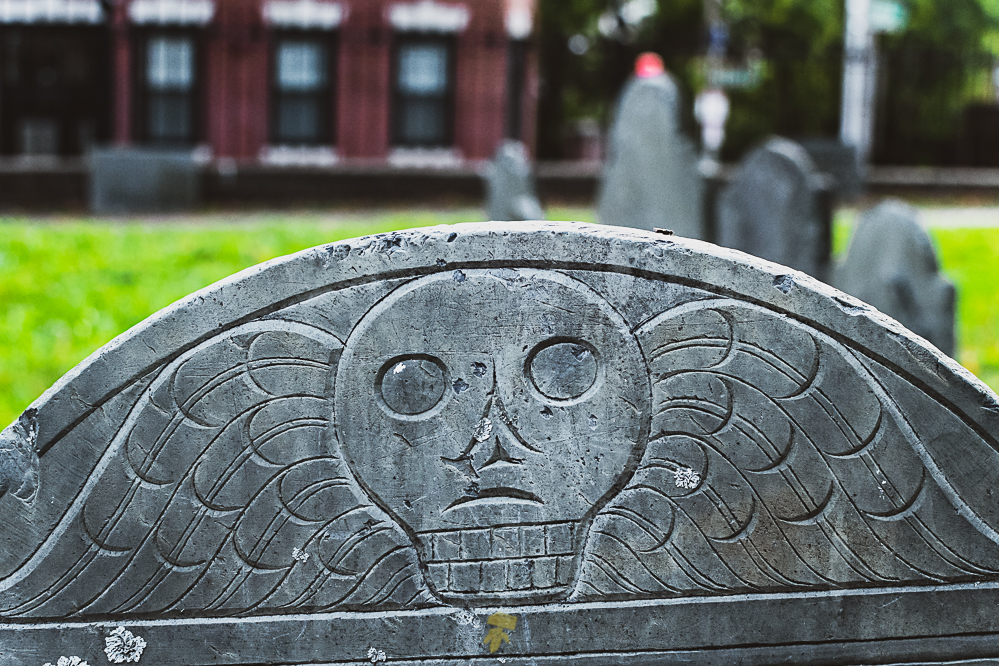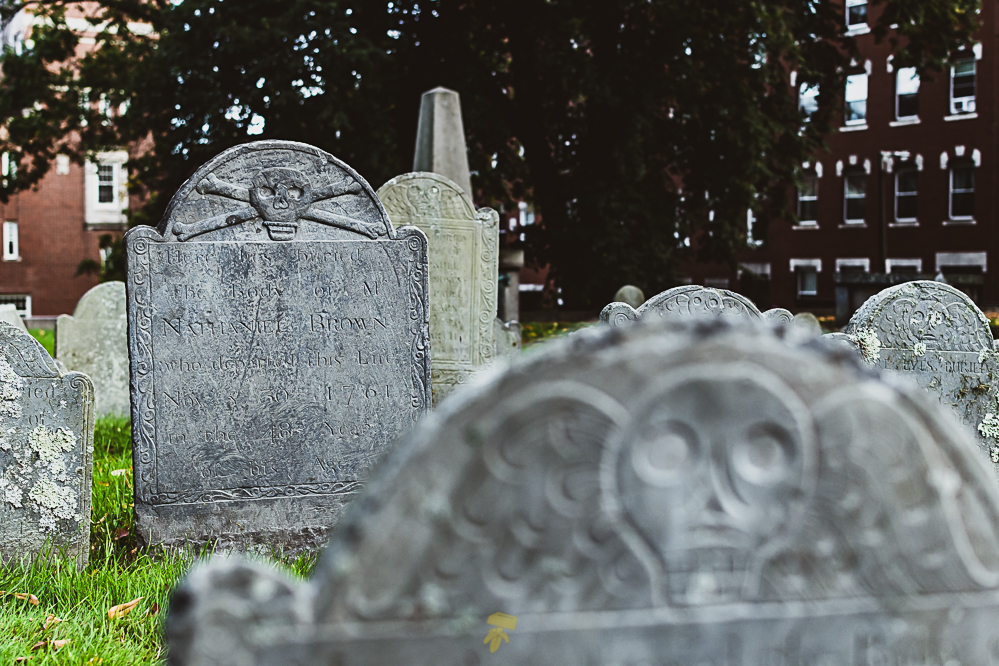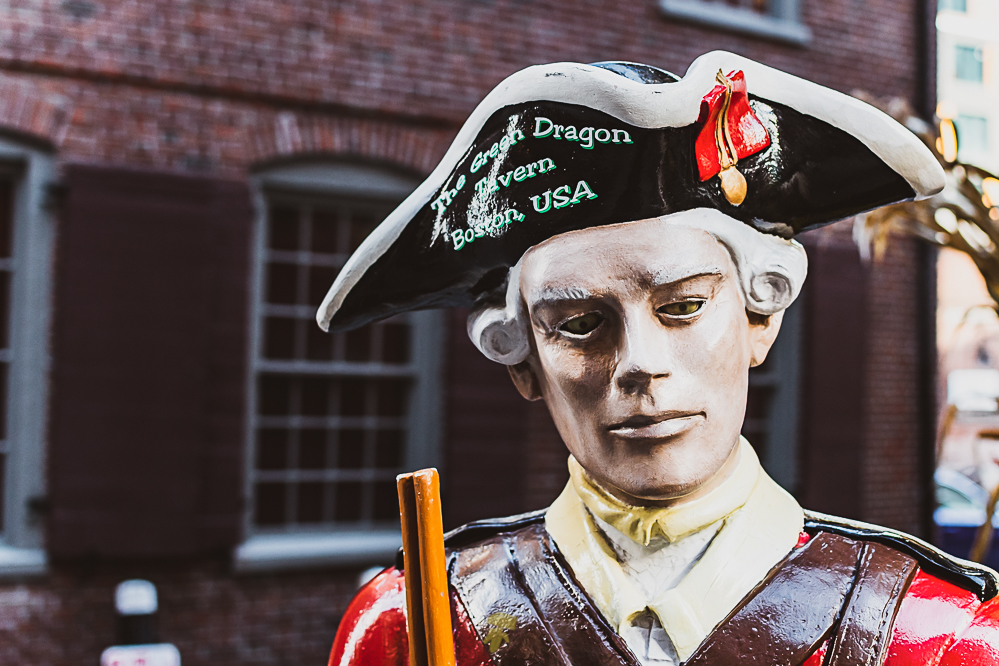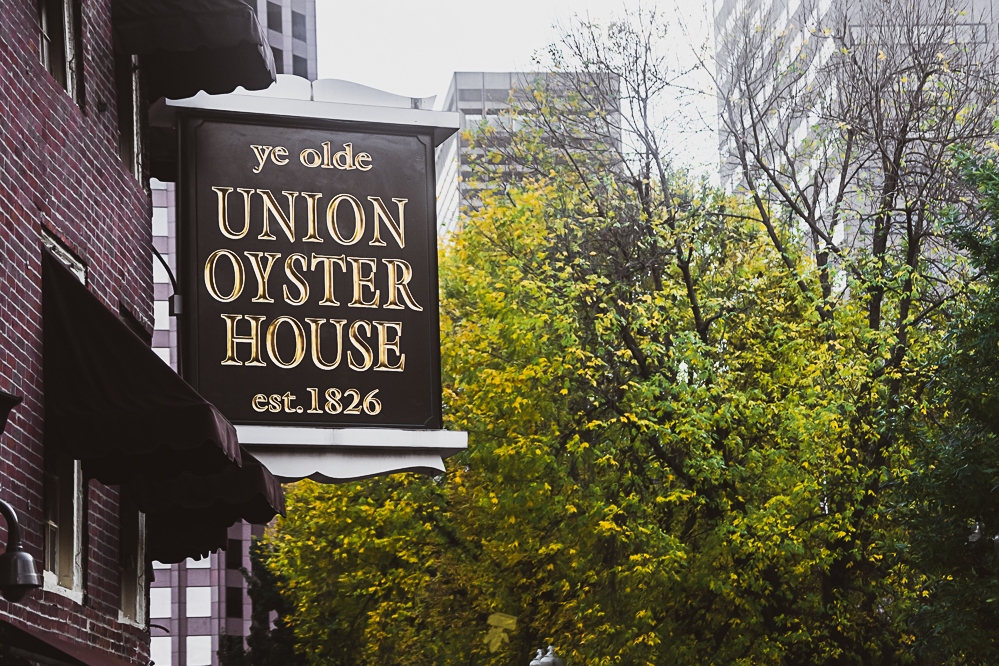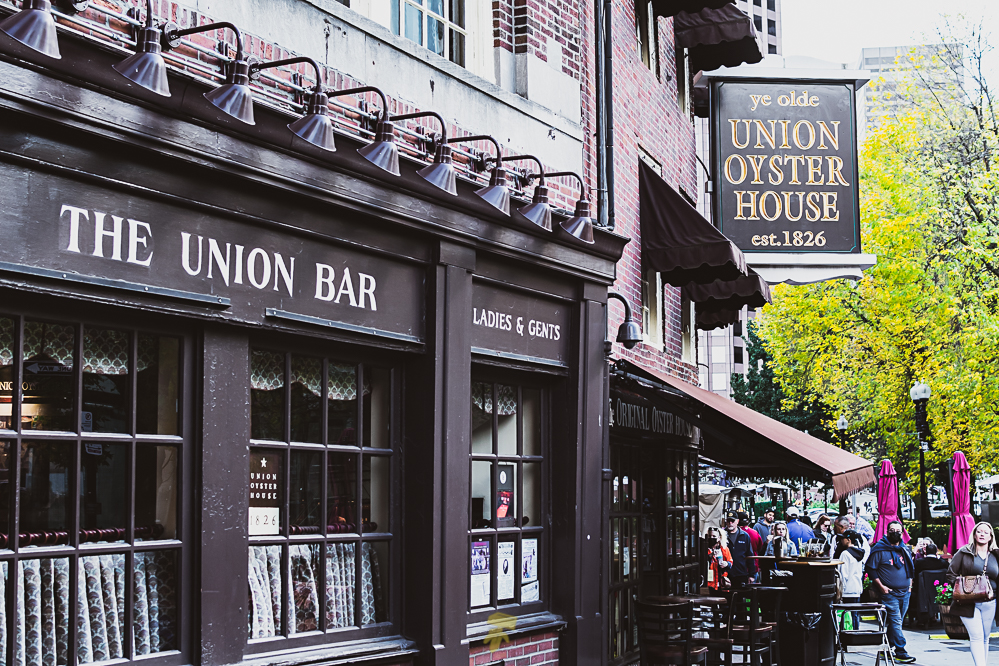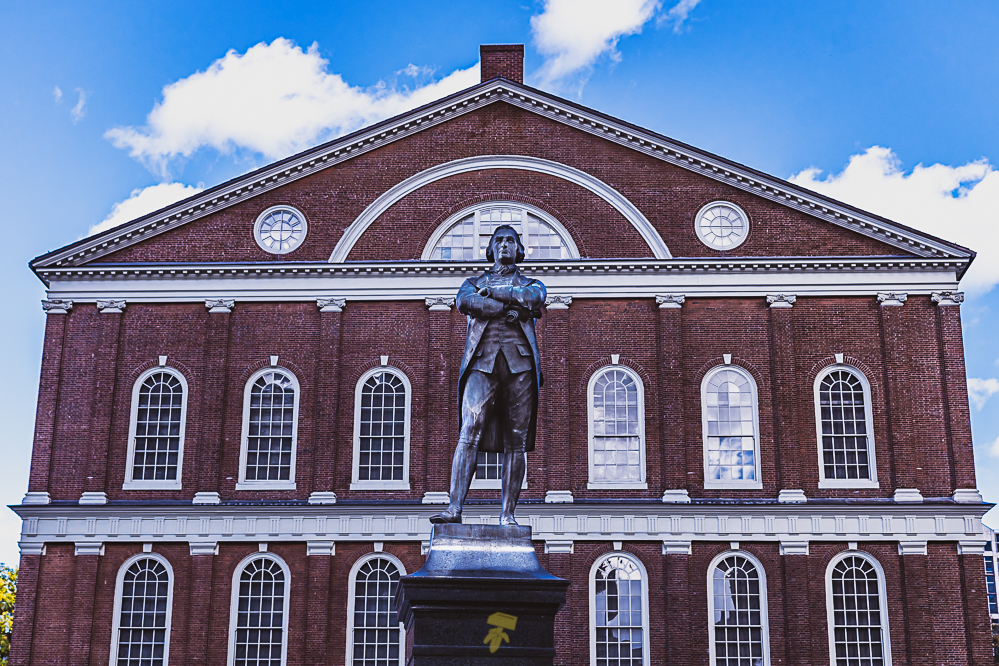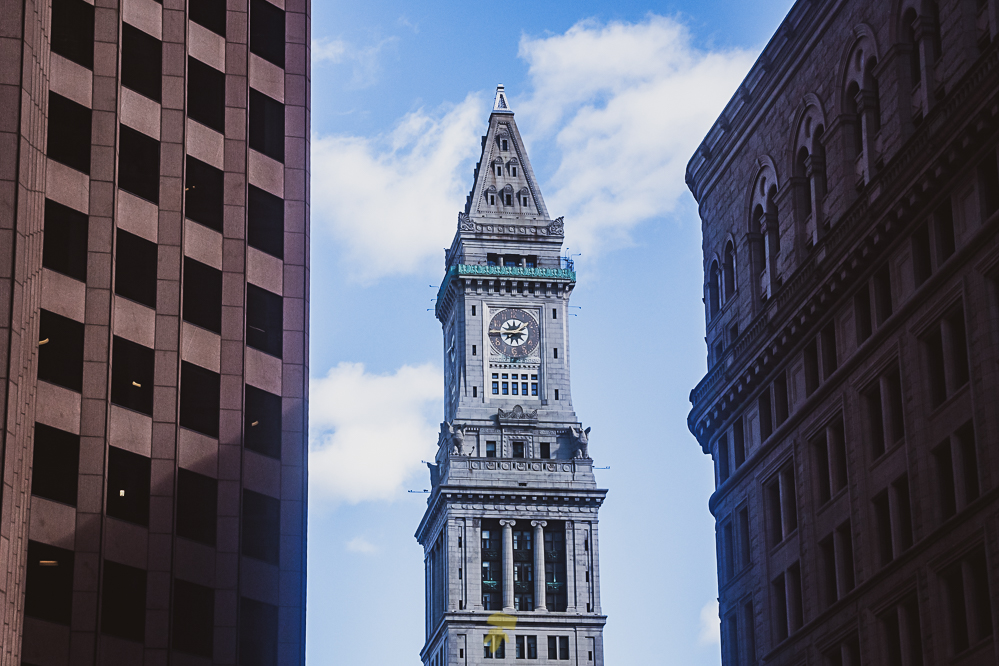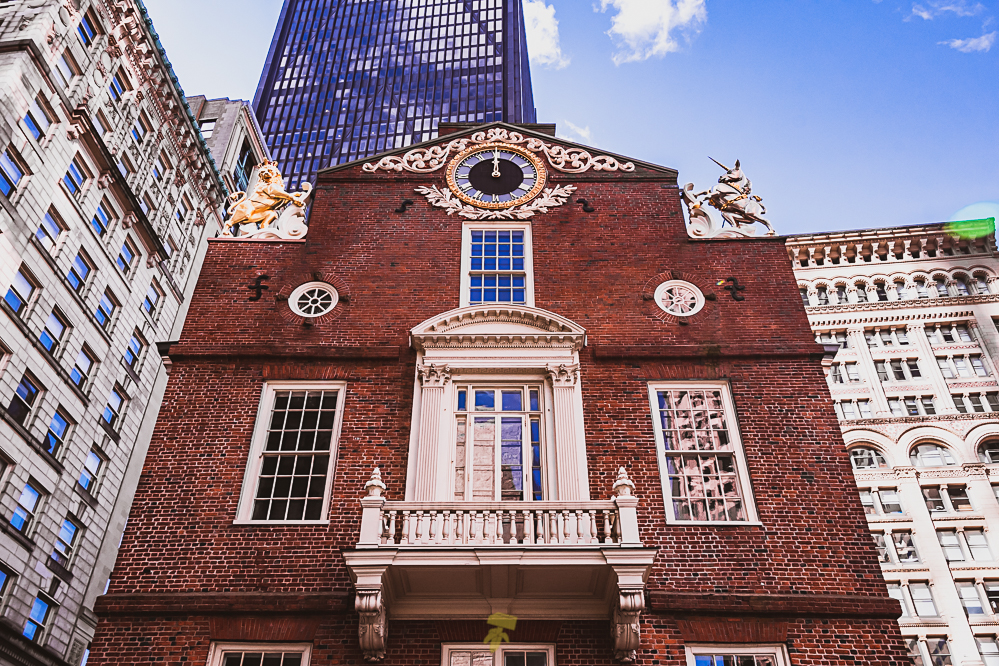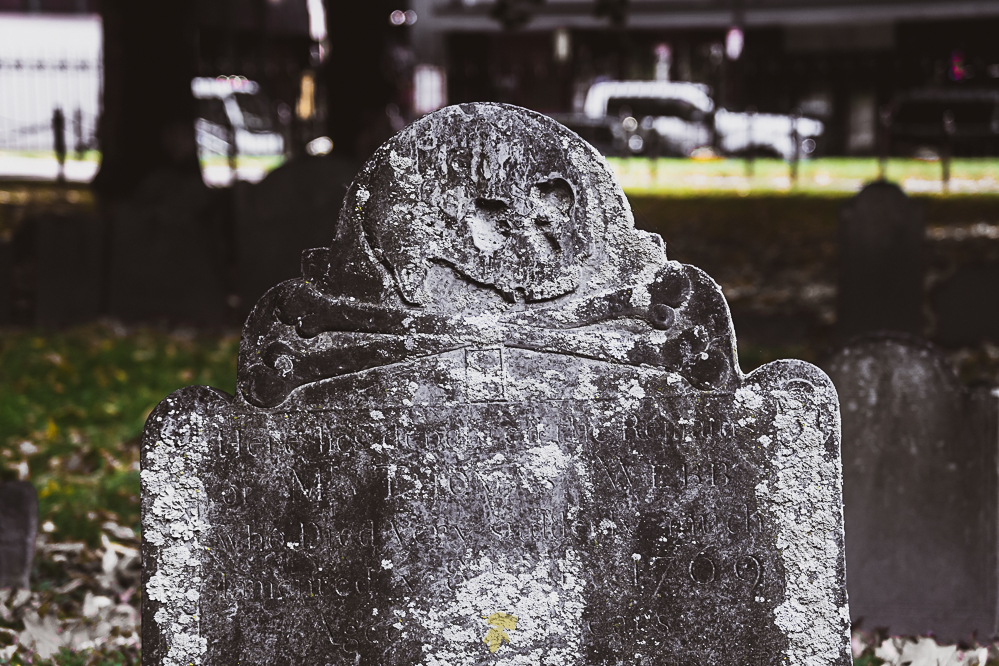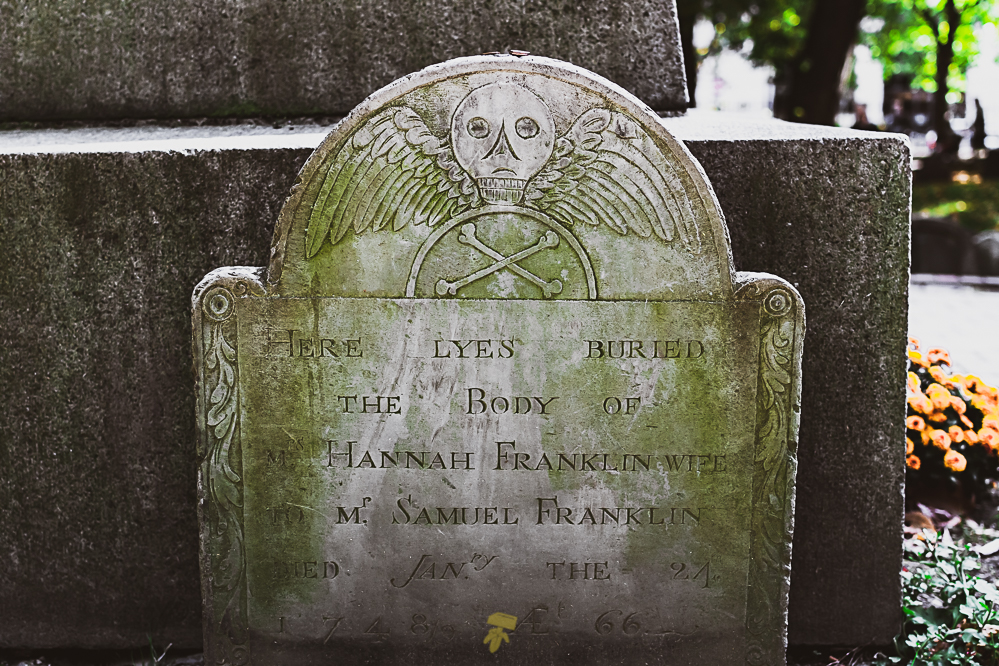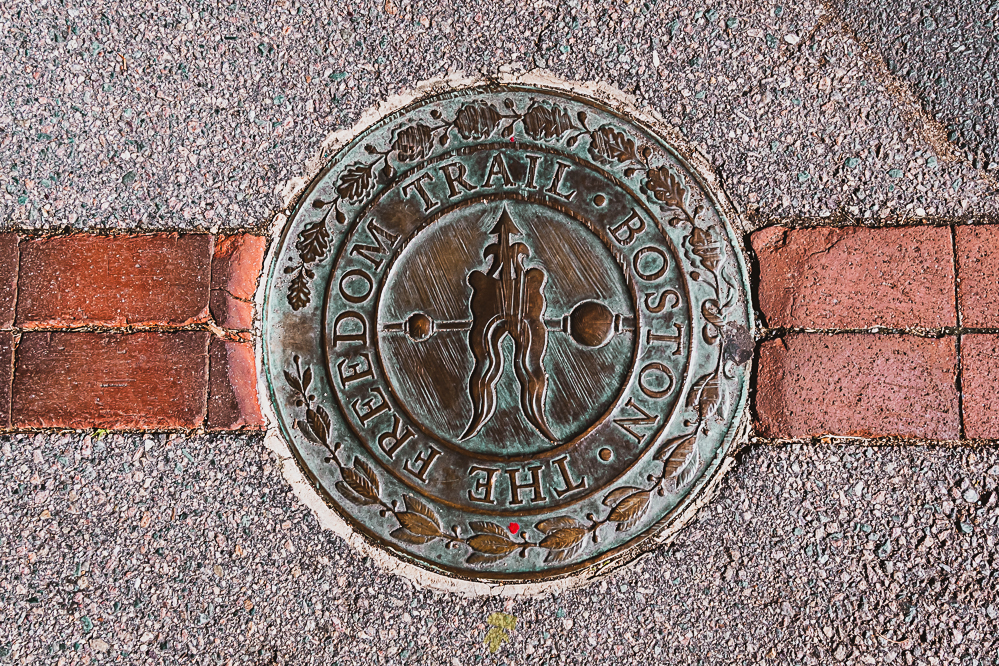The Freedom Trail is a 2.5-3.7mile-long path through Boston, Massachusetts, that passes by sixteen locations significant to the history of the United States. Marked largely with brick, or otherwise red stripe, it winds from Boston Common in downtown Boston through Faneuil Hall in Haymarket, up to the North End then to the Bunker Hill Monument in Charlestown.
Stops along the trail include simple explanatory ground markers such as the site of the Boston Massacre, graveyards, notable churches and buildings like the House of Paul Revere and the Old South Meeting House, and then there’s the world’s oldest commissioned warship afloat today, the USS Constitution.
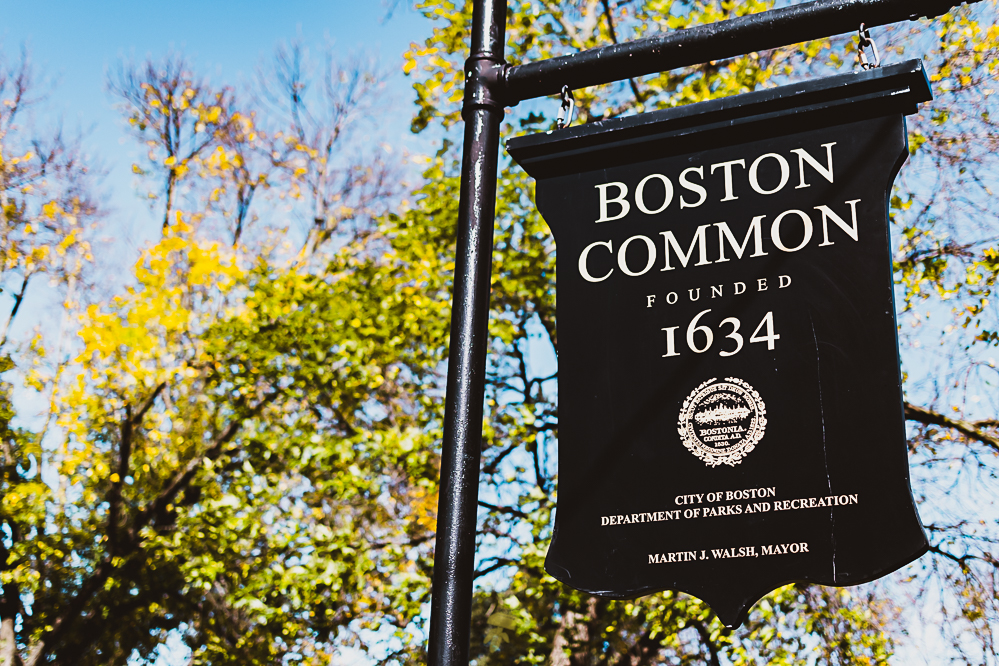 Established in 1634, Boston Common is America’s oldest public park. Puritan colonists purchased the land rights to the Common’s 44 acres from the first European settler of the area, Anglican minister William Blackstone.
Established in 1634, Boston Common is America’s oldest public park. Puritan colonists purchased the land rights to the Common’s 44 acres from the first European settler of the area, Anglican minister William Blackstone.
The Common was a site for Puritanical punishments, home to a whipping post, pillory, and stocks. Pirates, murderers, and witches were hanged from the tree known as “The Great Elm,” now gone. Mary Dyer and three other Quakers were also hanged on the Common for their beliefs. A statue of Mary Dyer now stands on the Massachusetts State House lawn.
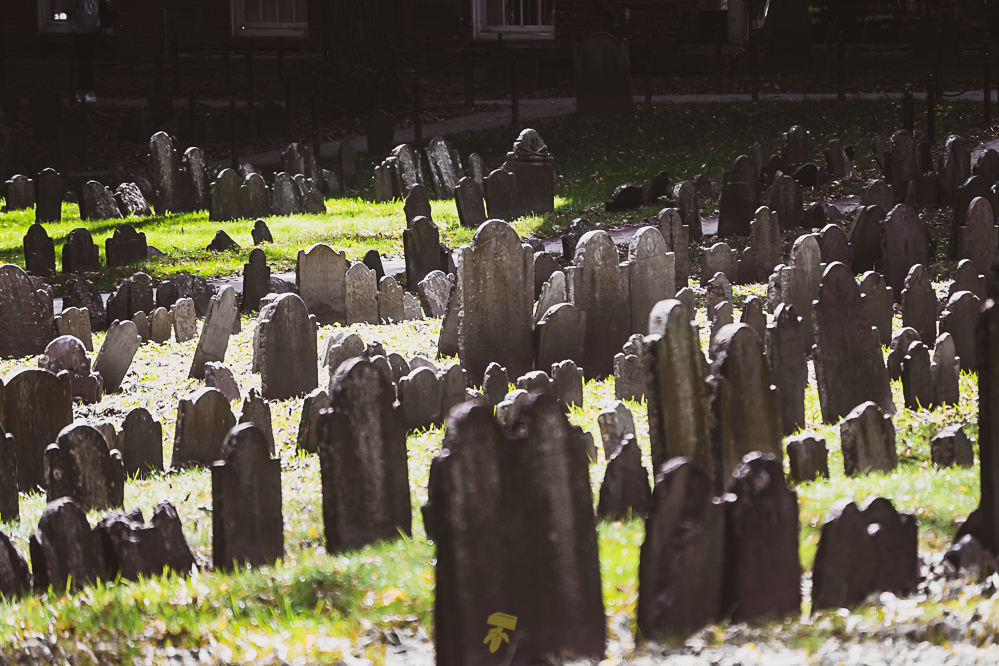 Some of America’s most notable citizens rest in the Granary Burying Ground, established in 1660. Named for the 12,000-bushel grain storage building that was once next door, the historic burying ground has approximately 2,300 markers. it holds the remains of Benjamin Franklin’s parents, John Hancock’s tomb, Paul Revere is buried near the back, stones in the two front corners of the burial ground commemorate James Otis and Samuel Adams. Next to the stone for Adams is the grave marker for the victims of the Boston Massacre. On the right hand wall is a plaque marking the tomb of Robert Treat Paine, the third signer of the Declaration of Independence.
Some of America’s most notable citizens rest in the Granary Burying Ground, established in 1660. Named for the 12,000-bushel grain storage building that was once next door, the historic burying ground has approximately 2,300 markers. it holds the remains of Benjamin Franklin’s parents, John Hancock’s tomb, Paul Revere is buried near the back, stones in the two front corners of the burial ground commemorate James Otis and Samuel Adams. Next to the stone for Adams is the grave marker for the victims of the Boston Massacre. On the right hand wall is a plaque marking the tomb of Robert Treat Paine, the third signer of the Declaration of Independence.
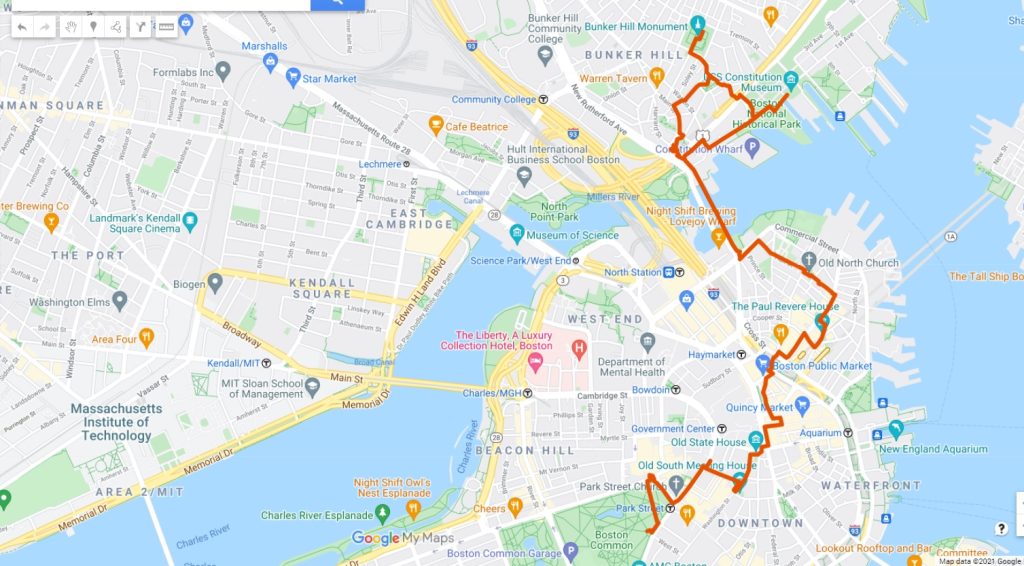
 The Boston Massacre site marker is located at the intersection of State and Congress Streets in Downtown Boston, outside of the Old State House, a few yards away from where the Massacre took place.
The Boston Massacre site marker is located at the intersection of State and Congress Streets in Downtown Boston, outside of the Old State House, a few yards away from where the Massacre took place.
Copp’s Hill Burying Ground, named after shoemaker William Copp, is the final resting place and burying ground of merchants, artisans, and craftspeople who lived in the North End. Located on a hill on which a windmill once stood, the land was given to the town. Copp’s Hill was Boston’s largest colonial burying ground, dating from 1659. The burying ground holds Old North Church sexton Robert Newman, the man who hung the lanterns on the night of Paul Revere’s midnight ride, and Edmund Hartt, builder of the USS Constitution.

The Battle of Bunker Hill on June 17, 1775, was the first major battle of the Revolutionary War and predicted the character and outcome of the rest of the war. It took a force of 3,000 Redcoats three assaults to dislodge the Colonial Militia from a hastily constructed redoubt atop Breed’s Hill in Charlestown. While technically a British victory, the Battle of Bunker Hill proved that Colonial forces could fight effectively against the British.
 Fifty years after the battle a lasting monument and tribute to the memory of the Battle of Bunker Hill, a 221-foot tall obelisk built entirely from quarried granite. It took over seventeen years to complete, but it still stands to this day atop a prominence of the battlefield now known as Breed’s Hill. There are 294 steps to the top.
Fifty years after the battle a lasting monument and tribute to the memory of the Battle of Bunker Hill, a 221-foot tall obelisk built entirely from quarried granite. It took over seventeen years to complete, but it still stands to this day atop a prominence of the battlefield now known as Breed’s Hill. There are 294 steps to the top.

